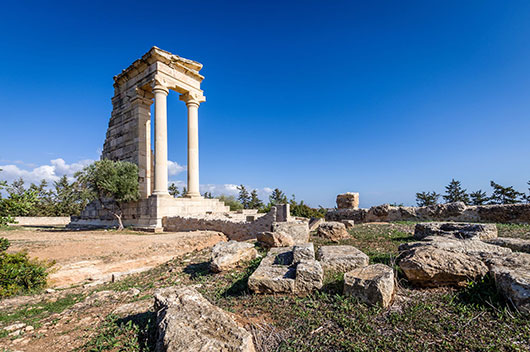CL7046: ‘Unlocking’ Sacred Landscapes: Cypriot Sanctuaries and Religion from Prehistory to Late Antiquity

Perceiving sacred space as instrumental in forming power relations and worldviews in antiquity, this module explores how meanings and identities were diachronically expressed in, or created by, the topographical setting of religion and its material depositions and dedications. Using Cyprus as a case study, it reviews the main theoretical and methodological issues relating to ancient Mediterranean religions and sacred landscapes, equipping students with the appropriate skills to study them.
This module requires the completion of assignments as directed by the lecturer. All assignments are compulsory.
- Module Organiser:
- Duration:
- Hilary Term
- Contact Hours:
- 22 (1 x 2-hour seminar p.w.)
- Weighting:
- 10 ECTS
- Assessment:
- 100% Continuous Assessment
Introductory Reading
- Insoll, T. (2004) Archaeology, Ritual, Religion. London: Routledge.
- Karageorghis, J. (2005) Kypris: The Aphrodite of Cyprus. Ancient Sources and Archaeological Evidence. Nicosia: The A.G. Leventis Foundation.
- Karageorghis, V. (1998) Greek Gods and Heroes in Ancient Cyprus. Athens: Commercial Bank of Greece.
- Papantoniou, G. (2012) Religion and Social Transformations in Cyprus. From the Cypriot Basileis to the Hellenistic Strategos. Mnemosyne Supplements 347. Leiden: Brill.
- Rountree, K. (2012) “Exploring new approaches to the archaeology of spiritualities”. In The Archaeology of Spiritualities, edited by K. Rountree, C.E. Morris and A.A.D. Peatfield, v-xii. New York: Springer.
- Webb, J.M. (1999) Ritual Architecture, Iconography and Practice in the Late Cypriot Bronze Age. Studies in Mediterranean Archaeology-Pocket Books 75. Jonsered: Paul Åströms Förlag.
Learning Outcomes
On successful conclusion of this module, students will be able to:
- Reconstruct ancient sacred landscapes, ritual and cult drawing on the full range of archaeological, artistic and textual sources.
- Discuss how social power, ideology, communal and personal identities are expressed in sacred landscapes and ritual practice.
- Identify the extent to which religion existed as a transcultural phenomenon from Prehistory to Late Antiquity.
- Analyse the societal significance of the interplay between sacred and secular space.
- Think critically about how history and archaeology may project anachronistic views in relation to the study of ancient religion and the ‘colonial’ situations of the past.

